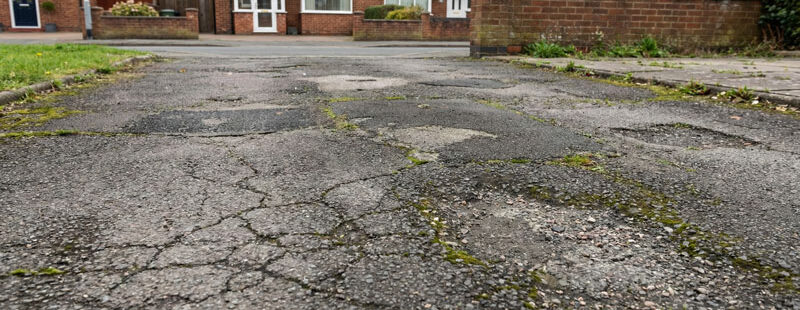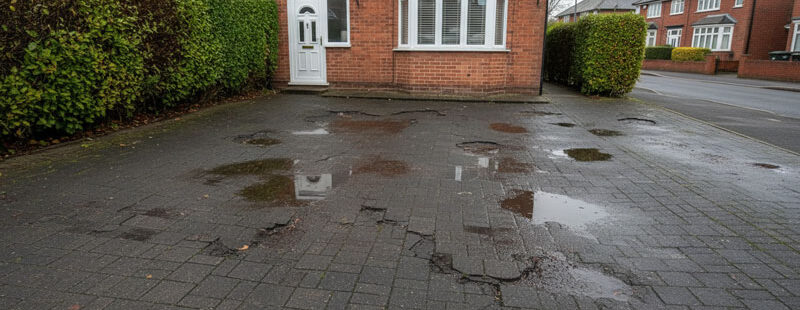
- min min
- No Comments
- July 28, 2025
Top Things to Consider When Surfacing Roads in Essex
Road surfacing in Essex plays a crucial role in keeping traffic flowing, ensuring safety, and supporting the local economy. Whether you’re a local council, a commercial developer, or a private landowner, resurfacing projects require thorough planning, skilled execution, and compliance with strict regulations.
In this blog, we explore the key things you need to consider when surfacing roads in Essex—from local conditions and legal requirements to material choice and contractor selection.
1. Understanding Essex’s Road Types and Usage
Essex has a wide variety of roads—from rural lanes and residential streets to busy urban thoroughfares and industrial estate access roads. The intended use of the road will directly influence your resurfacing strategy.
- Heavy traffic routes (e.g., near industrial parks) need thicker, more robust layers of asphalt or tarmac.
- Residential streets may require a quieter, smoother finish like resin-bound or micro asphalt.
- Rural areas must consider edge deterioration and drainage.
Understanding the expected load and usage is essential for choosing the right technique and materials.
2. Choosing the Right Surfacing Material
Material choice is one of the most important decisions in any resurfacing project. Common options in Essex include:
- Tarmac – Durable, cost-effective, ideal for public roads and car parks.
- Asphalt – Long-lasting and smooth, often used for major roads and highways.
- Resin-bound – Visually appealing and permeable, often used for footpaths and private estates.
At East Herts Surfacing, we assess your specific needs and recommend the most suitable solution based on performance, budget, and environmental impact.
3. Drainage and Water Management
Essex’s variable weather—especially winter rainfall—means proper drainage is essential. Poor water management leads to:
- Surface flooding
- Cracking and potholes
- Freeze-thaw damage
Ensure that any road surfacing in Essex includes adequate fall direction, gullies, or even permeable materials for sustainable urban drainage (SUDS) compliance.
4. Regulations and Compliance
All roadworks must adhere to local authority standards and national safety regulations. These include:
- Chapter 8 signage requirements
- Road opening permits
- Section 278 agreements for adopted roads
- Health & Safety guidelines (CDM Regulations)
Using an experienced contractor like East Herts Surfacing helps ensure your project meets legal requirements, avoiding delays, fines, or forced rework.
5. Minimising Disruption
Surfacing projects can cause significant disruption if not properly planned. In busy Essex communities, that means working:
- During off-peak hours
- On weekends or overnight
- In phased sections to maintain access
A professional surfacing company will help you plan around traffic flow and resident access. We’ve successfully delivered projects across the county with minimal interruption—check out our project gallery to see how.
6. Subbase Condition and Preparation
The visible surface is only part of the story. A strong subbase is what determines whether your new road will last 5 years—or 20.
Before resurfacing, we conduct a full site assessment to check:
- Depth and stability of the existing base
- Soil condition and compaction
- Any signs of previous movement or failure
Neglecting this step can cause premature surface failure. Our preparation process ensures a solid foundation that supports the surface for years to come.
7. Environmental Considerations
Modern road surfacing must balance performance with sustainability. In Essex, this includes:
- Using recycled materials (e.g., recycled asphalt planings)
- Minimising emissions from machinery
- Specifying low-impact binders or eco-resins
If you’re working on a public or council-led project, there may also be environmental targets you’re required to meet. Our team can help you meet green standards without compromising durability or aesthetics.
8. Aesthetic and Community Impact
While functionality is the priority, appearance still matters—especially in residential or heritage areas. Clients in Essex often request:
- Colour-matched tarmac or resin
- Decorative aggregates
- Custom finishes for housing estates or business parks
Balancing visual appeal with functionality is a hallmark of a well-executed road surfacing project.
9. Working with Local Authorities and Utilities
If your project involves adopted roads, access roads to developments, or sites near public utilities, coordination is key. Expect to work with:
- Essex County Council Highways
- Utility companies (water, gas, telecom)
- Neighbouring landowners or tenants
Experienced contractors manage all necessary permissions and coordinate with third parties to avoid delays or clashes with underground infrastructure.
10. Choosing the Right Contractor
Your choice of contractor makes all the difference. Look for a team with:
- Proven experience in Essex
- Compliance with health & safety standards
- Access to machinery and materials
- Transparent quotes and timelines
- A portfolio of successful local projects
At East Herts Surfacing, we’ve completed surfacing works across Essex—from small access roads to full estate developments. Our project portfolio shows our ability to deliver quality results on time and on budget.
Final Thoughts
Road surfacing in Essex is more than just laying tarmac—it’s about engineering safe, efficient, and attractive surfaces that stand the test of time. From selecting the right materials to managing drainage and disruption, every step matters.
If you’re planning a road surfacing project—whether it’s a private access road, a commercial estate, or a residential development—make sure you consider all the factors above. And most importantly, partner with a contractor who understands the local challenges and delivers solutions that last.
✅ Talk to the Experts at East Herts Surfacing
Need advice on your upcoming road surfacing project in Essex? We offer expert consultations, site assessments, and no-obligation quotes. Visit our services page to learn more or explore our past work in our project portfolio.





